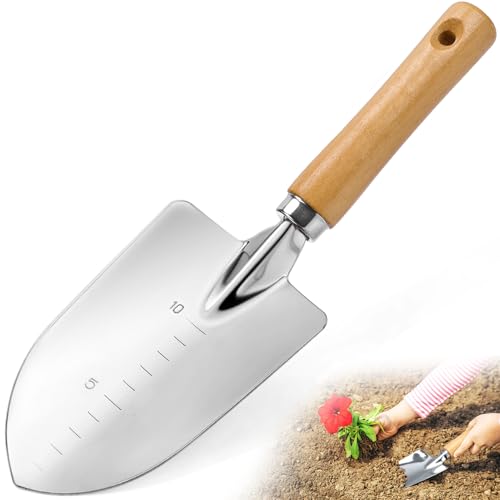What is a Gauging Trowel?
A gauging trowel is a handheld tool typically used in masonry and construction work. It is part of a family of trowels that includes finishing trowels, margin trowels, and pointing trowels. Gauging trowels are distinct in their shape and purpose, designed specifically for precise measuring and mixing of materials such as cement, plaster, and mortar. They are commonly used by professional masons, carpenters, and DIY enthusiasts.
The Design and Function of a Gauging Trowel
Gauging trowels have a unique shape and design that sets them apart from other types of trowels. They have a rectangular or square-shaped blade, which is typically made of stainless steel or high-quality carbon steel. The blade is flat, narrow, and measures around 7-12 inches in length.
The handle of a gauging trowel is usually made of wood, plastic, or rubber. It is ergonomically designed for a comfortable grip and easy maneuverability. The trowel may also have a metal ferrule that connects the handle to the blade, providing added strength and durability.
One of the key functions of a gauging trowel is to measure and mix materials accurately. The flat blade is used to scoop and level small amounts of cement, plaster, or mortar. The narrow width allows for precise control and measurement, ensuring the correct proportions of materials are used in construction or masonry projects.
Applications and Uses of a Gauging Trowel
Gauging trowels are versatile tools that have a wide range of applications in construction, masonry, and other trades. Here are some common uses of gauging trowels:
- Mixing Materials: The flat blade of a gauging trowel is ideal for mixing cement, plaster, or mortar. The narrow width allows for accurate measurement and control of the materials, ensuring consistent and reliable mixing.
- Applying Thin Layers: Gauging trowels are often used to apply thin layers of mortar or plaster onto surfaces. The flat blade helps spread the material evenly and smoothly, creating a neat and professional finish.
- Pointing and Repointing: Gauging trowels are commonly used for pointing and repointing brickwork. The narrow blade allows for precise application of mortar to fill in gaps and joints between bricks.
- Creating Clean Edges: The flat and narrow blade of a gauging trowel can be used to create clean and sharp edges on materials like plaster, cement, or mortar. This is particularly useful when working on detailed or intricate projects.
- Other Uses: Gauging trowels can also be used for tasks such as scraping, smoothing, and finishing various materials. They are a versatile tool that can be adapted to many different applications.
Tips for Using a Gauging Trowel
Here are some tips for using a gauging trowel effectively:
- Choose the Right Size: Gauging trowels come in different sizes, so make sure to select one that suits your specific needs. Consider the type of project you will be working on and the amount of material you will be handling.
- Keep it Clean: After each use, clean the gauging trowel thoroughly to remove any dried or hardened material. This will help prolong its lifespan and ensure optimal performance.
- Store Properly: Store your gauging trowel in a dry place, away from moisture and direct sunlight. This will prevent rusting and damage to the blade.
- Use the Right Technique: When using a gauging trowel, apply even pressure and maintain a steady hand for smooth and consistent results. Practice your technique before working on important projects.
- Inspect Regularly: Periodically check your gauging trowel for any signs of wear or damage. Replace it if the blade becomes worn or the handle becomes loose.
A gauging trowel is a specialized tool used in masonry and construction work for measuring and mixing materials accurately. It has a unique design with a flat, narrow blade and a comfortable handle. Gauging trowels have a wide range of applications, from mixing and applying materials to creating clean edges and pointing brickwork. By following proper techniques and maintenance, a gauging trowel can be a reliable and useful tool for both professionals and DIYers in various projects.






